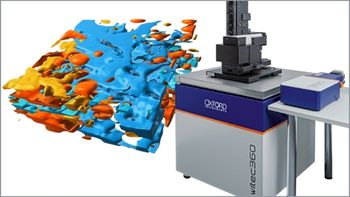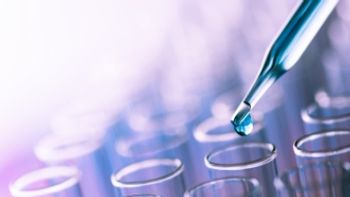
A Virtual Symposium: Trace Element Detection Limits: What Every Spectroscopist Should Know
Thursday, September 23, 2021 at 10am EDT| 7am PDT| 3pm BST| 4pm CESTThink that you already know everything you need to know about trace element detection limits? This symposium-format webcast includes some not-always-obvious, yet practical ways of thinking about and improving detection limits and how they can help your lab become more proficient at trace element analysis.
Register Free:
Morning Session, 10:00am—12:00pm EDT
10:00am Symposium Introduction
Laura Bush, Editorial Director, Spectroscopy
10:05am The Limit of Quantification: A Tool for Creating Confidence and Competitive Advantage Tom Gluodenis, Ph.D., Lincoln University
An academic exercise, a regulatory necessity, or a critical business metric that enables value pricing and a competitive barrier? Analysts and regulators routinely use terms such as confidence intervals, limit of detection, and limit of quantification. Learn what these terms mean, the levers that impact them, and how they can be used to create confidence in the analytical services that you provide, leading to enhanced client retention and new customer acquisition.
10:35am Trace Element Analysis in the Real World: Practical Considerations Driving ICP-MS Detection Performance
Robert Thomas, Scientific Solutions
Inductively coupled plasma-mass spectrometry (ICP-MS) is undoubtedly the fastest growing trace element technique available today, carrying out many varied and diverse applications, including environmental, geological, biomedical, pharmaceutical, cannabis, food, petrochemical, semiconductor, and nuclear. This presentation focuses on some of the common ICP-MS application areas and takes a closer look into what factors are driving them, and in particular, the balance between maximizing productivity and optimizing detection limits.
11:05am Adoption of Single Reaction Chamber Microwave Digestion and Triple-quad ICP-MS to Improve Efficiency and Low Detection Trace and Ultratrace Element Analysis of Geologic Materials
John F. Casey, Ph.D., University of Houston
The adoption of a single-reaction chamber microwave digestion system coupled with triple-quadrupole ICP-MS has allowed significant improvements in overall lab sample throughput as well as achievement of interference-free analysis and improved detection of trace and ultratrace elements in our lab. We review techniques, which allow up to 57 trace and ultra-trace elements to be determined in crude oils and the multi-sample rapid dissolution and analysis of rock samples using both microwave digestion and triple-quad ICP-MS. Rock digestions include complete recovery of standards and samples with abundant refractory phases such as the mineral zircon, which in the past represented a formidable obstacle to microwave techniques.
11:35am Question-and-Answer Period
Afternoon Session, 1:00–3:15pm EDT
1:00pm THINK BLANK! Clean Chemistry Tools for Trace Element Analysis
Gianpaolo Rota, Milestone SRL
As developments in ICP-OES and ICP-MS instrumentation continue to drive toward lower trace element detection limits, these improvements cannot be fully realized for real-world applications without corresponding methods to reduce and control system and sample contamination, often indicated by measuring an “analytical blank.” This presentation covers tools and methods for improving the cleanliness of labware and controlling the purity of reagents that are, along with other aspects of the sample preparation procedure, part of Milestone’s “Clean Chemistry” approach to controlling the analytical blank and realizing lower, real-world trace element detection limits.
1:30pm The Role of Microwave Digestion in Achieving Superior Trace Metals Detection Limits Eric Farrell, Milestone Inc.
There is often more than one might expect when it comes to selecting an appropriate microwave digestion system and methods for working at low metals concentrations. In this presentation, we look at factors such as sample size, acid usage, materials used, and digestion performance, and how they impact practical limits of quantitation and data quality based on ensuring complete analyte dissolution and reducing or eliminating contamination, background interferences, dilution effects, and analyte loss.
2:00pm Use of Direct Mercury Analysis to Determine Trace Levels of Mercury
Brian Looney, Ph.D., Savannah River Nuclear Solutions
2:30pm The Value of Reliable Data: Advances and Strategies in ICP-OES and ICP-MS to Achieve the Lowest Detection Limits
Bert Woods, Agilent Technologies
Join us in this presentation to find out how the latest ICP-OES and ICP-MS technology can help you to achieve the lowest detection limits and improve your elemental analysis.
3:00pm Question-and-Answer Period
Register free:
Newsletter
Get essential updates on the latest spectroscopy technologies, regulatory standards, and best practices—subscribe today to Spectroscopy.




